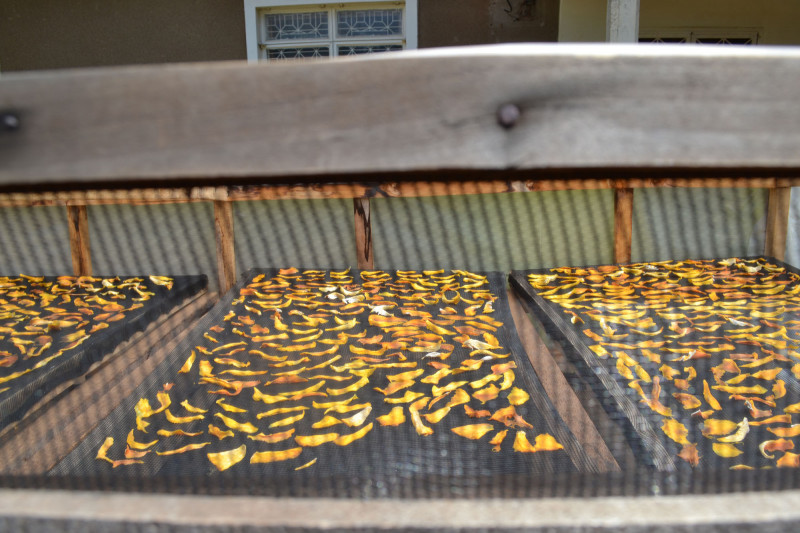Kathryn Burnham | January 23, 2017
Kilimanjaro Natural Foods Cooperative is located in a house just off the main tarmac road in Moshi, northern Tanzania. It’s clear how busy the co-operative as soon as you enter the gate. Three double solar dryers sit in the yard.
And inside the dryers: bright orange mango slices.
The co-operative has 90 members, most of whom are women. The women make a good profit growing fruit and vegetables to dry and sell as a group.
Njarita Mbaga is the manager of the co-operative. He says they sell their dried fruit and vegetables to grocery stores in Moshi and Arusha, as well as to hotels and safari companies. Last year, 35 members sold to the co-operative, earning 18 million Tanzanian shillings between them ($8,000 U.S.).
Albina Mkiwara is the chairperson of the group. She says they dry roselle (hibiscus), mango, pineapple, and banana, as well as lemongrass, tomato, and mushroom.
Many members have their own solar dryer, which Mrs. Mkiwara admits is expensive. She says a solar dryer costs 800,000 to one million shillings ($350 to $440 U.S.) to build—and the most expensive part is the wood.
A solar dryer is a box in which fruit and vegetables are dried on trays. The frame of the box is made of wood, and wooden legs keep the box off the ground. The top is white plastic, which lets in the sun’s rays. The bottom of the box is metal sheeting, to reflect the sunrays back inside. The sides and the trays are made from mesh strung between parts of the wooden frame.
Ngoni Nenguwo explains that the mesh allows air to circulate in the solar dryer. Mr. Nenguwo is a post-harvest specialist at the World Vegetable Center. He says that air circulation is very important for solar dryers.
Solar dryers make the drying process faster and more hygienic. The dryer can get 15 to 35 degrees hotter than outside temperatures, which means faster drying.
Mr. Nenguwo says that in many regions, farmers dry vegetables outside in the sun. But this risks contamination by dust, debris, or pesky animals. A solar dryer keeps the product cleaner—which is important if the vegetables will be sold or eaten.
Dried fruit and vegetables can earn farmers a good income because they can be sold all year round. They can also keep a family healthy. Red tomatoes, leafy green vegetables, orange carrots—they all make a meal brighter and more nutritious. In areas where vegetables and fruits cannot be grown and harvested all year-round, it can be difficult to get fruit and vegetables long after the rainy season.
Mr. Nenguwo calls the period between fruit and vegetable harvests a nutritional desert. He says families can often get enough calories through maize and meat, but not all the nutrients they need.
Drying fruit and vegetables is a simple process. Mr. Nenguwo says that most vegetables should be blanched before drying. The vegetable is placed in boiling water for one minute, then into cold water to cool, before transferring the vegetable in the dryer. This works for leafy vegetables and carrots.
For tomatoes, simply cut them, add salt, and place them in the dryer. For African eggplant slices, soak in lime juice for five minutes before placing in the dryer.
Mrs. Mkiwara explains that, to dry fruit, simply wash it, cut it, and place it in the dryer. She recommends cutting the fruit in thin slices like chips so they dry faster.
She adds that it’s important to use proper hygienic practices, including washing hands, knives, and the dryer with soap. She recommends covering hair and cutting nails short to keep foods clean.
Mrs. Mkiwara proudly says the women of the Kilimanjaro Natural Foods Cooperative have all received training on drying processes and hygienic practices, so they know their product is ready for the market.
With good drying practices, these women are making a good profit. Mrs. Mkiwara says, “The reward is that these women [can] send their children to school and assist their husbands.”
